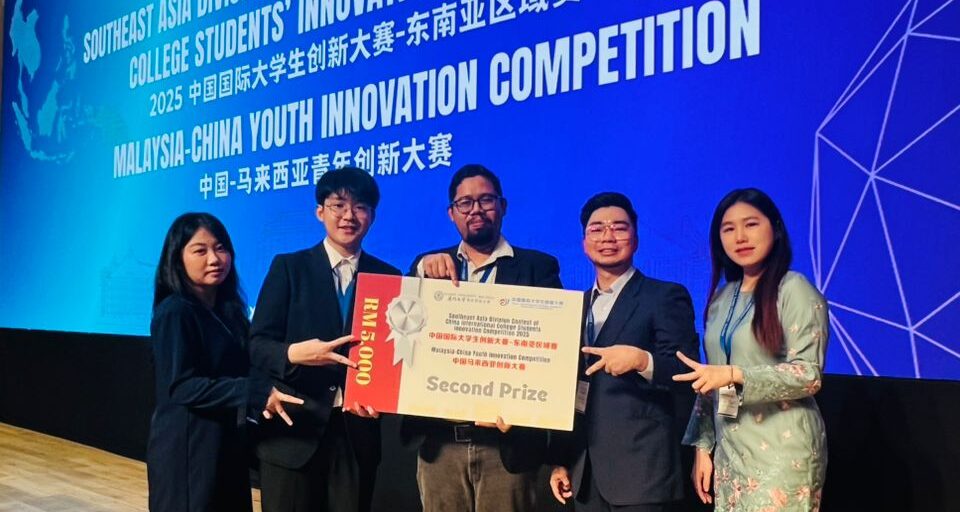Dr. Sean
A Glimpse into My Teaching Journey

Teaching!
Self-Leadership in Higher Education
Kerana Tuhan Untuk Manusia—UTM’s motto—has always reminded me that the privilege of academic work carries a responsibility to serve. To me, self-leadership is the disciplined art of translating that responsibility into daily choices: clarifying purpose, setting standards, regulating effort, and renewing motivation so that my actions align with the scholar—and person—I aspire to become. In the complex ecology of higher education—where teaching, research, innovation, collaboration, and student engagement intersect—self-leadership is not optional; it is the operating system that keeps the whole enterprise resilient and meaningful.
Teaching with intentionality
- In the classroom, my instinct is to begin with clarity—outcomes that are observable, fair assessments, and learning activities that encourage higher-order thinking. I design for belonging first: explicit norms, inclusive examples, and a pacing that alternates between brief input, peer discussion, and reflective pause. I treat feedback as a pedagogical tool rather than a verdict; students receive criteria in advance and narrative comments that explain how to improve. Over time, this has built trust, and trust opens the door to more rigorous learning.


Research and innovation with a translational tilt.
- My research decisions are guided by a simple question: Who benefits and how soon? I lean toward problems where theory can be carried across the “last mile” into practice—whether through datasets, toolkits, or policy-friendly briefs. I am comfortable convening diverse collaborators and moving work forward with transparent protocols: versioned documents, pre-registered analyses when appropriate, and a “write early, revise often” habit that keeps manuscripts alive rather than aspirational.

Academic integrity, professionalism, and trust are fundamental to the ethical responsibilities of a lecturer. These values shape how we conduct ourselves in the classroom, in research, and in the broader academic community. As a lecturer, I have a responsibility to uphold these principles in my teaching, research, publications, supervision, and administrative duties.
Upholding Academic Integrity
Academic integrity is paramount, particularly in teaching and research. I ensure that my students understand the importance of originality and honesty in their academic work. This is reflected not only in my expectation for them to properly cite sources but also in how I approach my own work. Plagiarism, misrepresentation, and dishonesty in research or grading undermine the trust that students and colleagues place in us as educators.
Professionalism in Teaching and Supervision
Professionalism extends beyond personal conduct; it influences the way I interact with students, particularly in the areas of teaching and supervision. It is essential that I establish clear expectations for my students, maintain confidentiality in academic advising, and provide fair and constructive feedback. By doing so, I foster an environment where students feel empowered to learn and develop their skills, knowing they are being guided by someone who is committed to their success.
Research and Publishing
In research and publication, the principles of professionalism and integrity must be adhered to rigorously. I adhere to ethical guidelines in conducting research, ensuring that my findings are valid, transparent, and reproducible. Additionally, when publishing, I follow proper citation practices and avoid any form of data manipulation or misrepresentation. This commitment to ethical research strengthens the credibility of my work and contributes positively to the academic community.
The Role of Etiquette and Ethics as an Educator
As an academic at Universiti Teknologi Malaysia (UTM), I am well aware that my role is not only defined by the knowledge I impart but also by the etiquette and ethics I exhibit. As a lecturer, my actions, both personal and professional, shape the learning environment, the academic community, and the broader society. The importance of etiquette and ethics in academia is foundational in building trust, respect, and credibility. These principles serve as the cornerstone of academic professionalism, influencing relationships with students, colleagues, management, and the public. In this reflective essay, I will explore the significance of these values, drawing from the UTM Code of Professional Ethics, Malaysian Public Service Ethics, and UTM’s Educational Goals.


